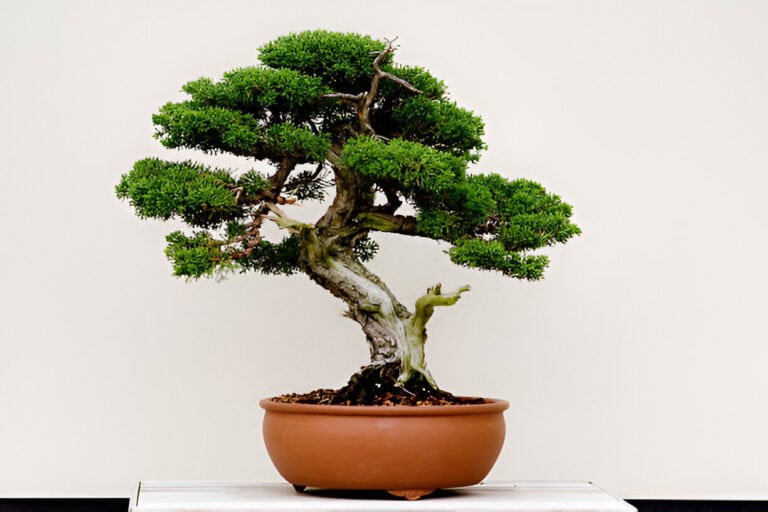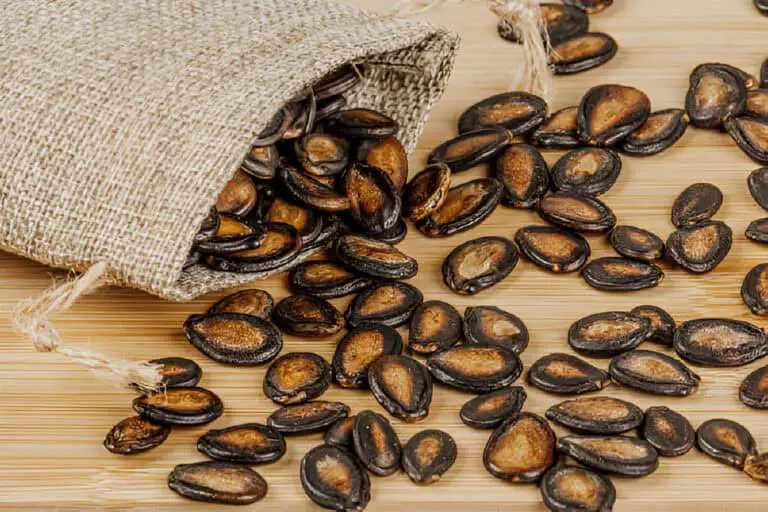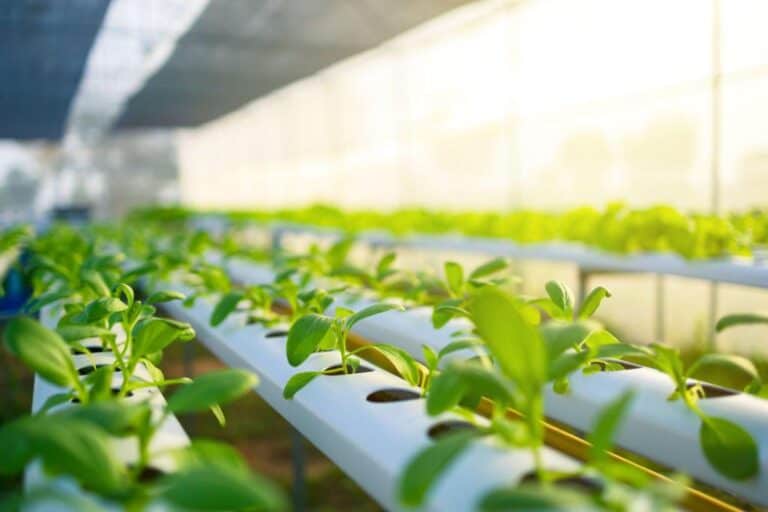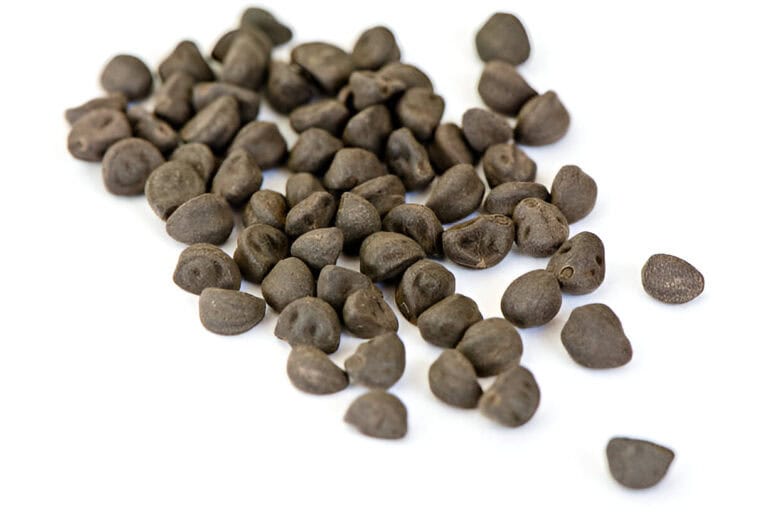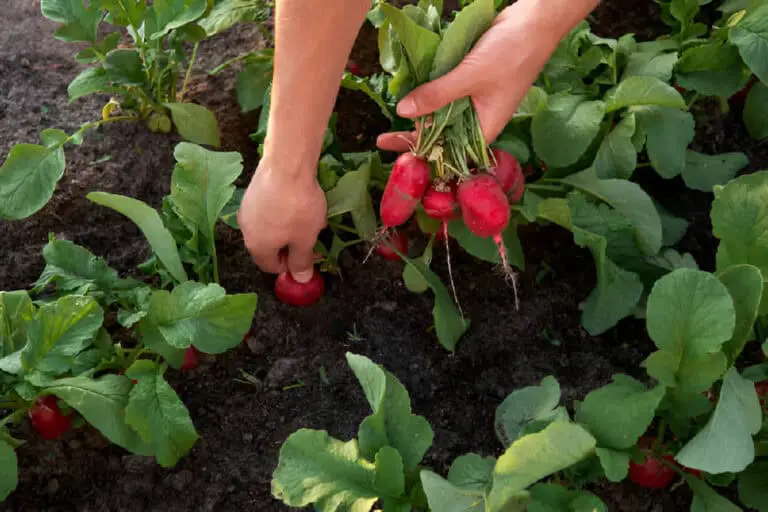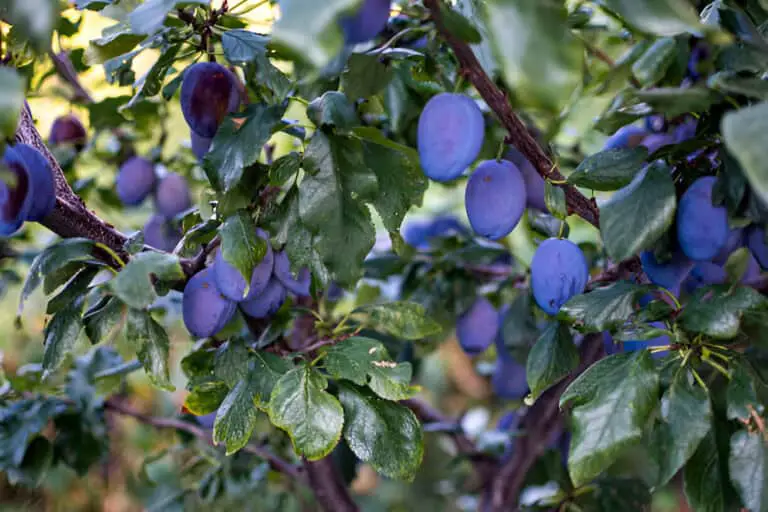Brussel Sprouts Brownish-Yellow Inside: What Causes It & Are They Safe To Eat?
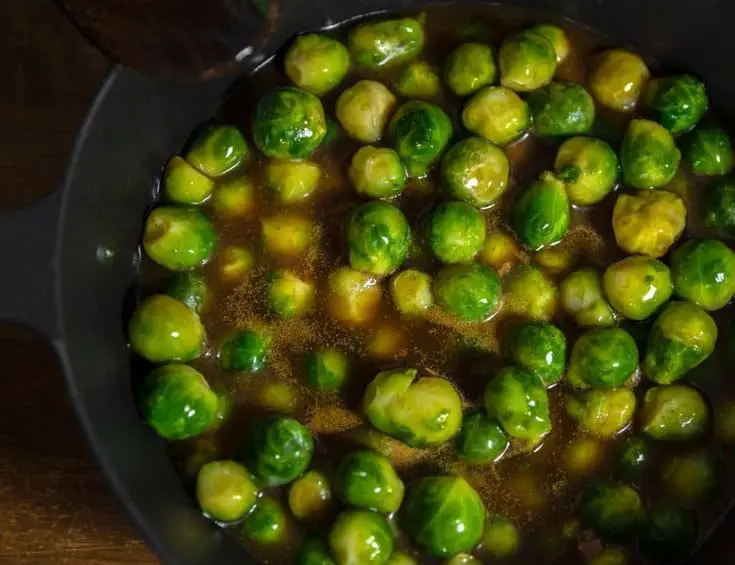
Brussels sprouts are a delicious and nutritious vegetable that is a staple on many dinner tables around the world. However, sometimes when we cut into them, we notice a brownish-yellow discoloration on the inside that can be concerning.
This discoloration can be off-putting, and it’s natural to wonder if it’s safe to consume the sprouts. The truth is, this phenomenon is relatively common, and there are a few different reasons why it can occur.
In this article, we’re going to explore the causes of brownish-yellow Brussels sprouts and whether or not they’re still safe to eat. We’ll discuss everything from fungal infections to nutrient deficiencies and how to identify when it’s time to discard the sprouts.
So, whether you’re a fan of these miniature cabbages or a bit hesitant about them, keep reading to learn more about Brussels sprouts’ brownish-yellow discoloration.
Understanding Brussels Sprouts
Brussels sprouts are named after the Belgian city of Brussels, where they are said to have originally been widely farmed in the 16th century.
Brussels sprouts are a type of cabbage that is typically grown in cool climates. The small, cabbage-like vegetables are typically harvested in the late fall and winter.
Because of their possibly harsh flavors created by sulfur-containing compounds, they have appeared on “most disliked vegetable” lists. Any bitter flavors and odors will be intensified if the vegetable is overcooked, especially if it is boiled.
One of the most common complaints about Brussels sprouts is that they are often brownish-yellow inside. So, what causes this discoloration, and is it safe to eat?
Causes of Brussels Sprouts Turning Yellow
Brussel sprouts are starting to turn yellow in some parts of the plant. This is happening because the production of chlorophyll is slowing down. The yellow color is caused by a lack of chlorophyll and is an indication that the plant is not healthy.
The development of chlorophyll is important for photosynthesis. Without it, plants would not be able to produce the food they need to survive. Chlorophyll is a green pigment that is found in the leaves of plants. It helps to absorb light energy from the sun and use it to produce glucose from carbon dioxide and water.
There are several reasons why this might be happening, including poor soil quality, drought, pests, or disease. As a result of the yellowing, plants will also start to wither away and become brittle.
There are many ways that you can fix this problem, including removing affected leaves, applying organic fertilizer, and watering the plant. The last resort for removing bugs and insects is by using a systemic fungicide.
Is It Safe to Eat Brownish-Yellow Brussels Sprouts?
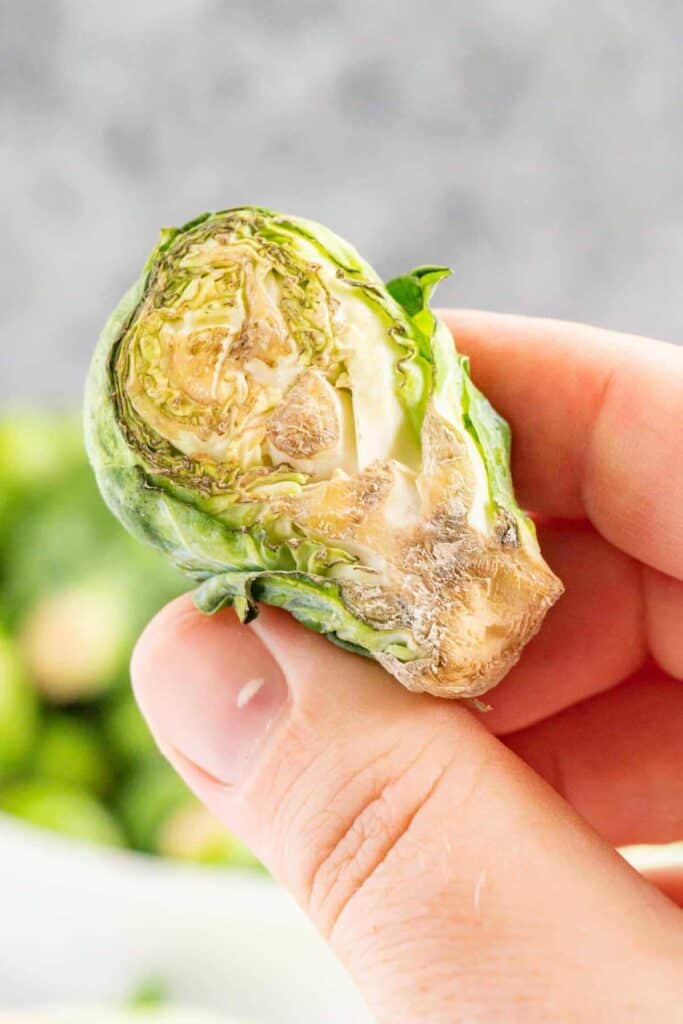
Take a look at the Brussels sprouts’ outer leaves. If the edges of the leaves have become brown, they have most likely gone bad.
This brussels sprouts’ leaves are still edible, and you can prepare the rest of them by peeling off the brown leaves. However, you should eat it right away before it starts to decay.
I’d remove the outer leaf layers and boil with the rest of the leaves if everything appears good underneath. Trust your senses of sight, smell, and taste.
Brownish-yellow Brussels sprouts can be safely eaten, but it is important to make sure that they are cooked properly.
WARNING![]()
Raw brownish-yellow Brussels sprouts can contain harmful toxins that can make you sick, so it is always best to cook them before eating. When cooked properly, brownish-yellow vegetables are just as healthy and nutritious as the normal green ones.
Why Are My Brussels Sprouts Pink Inside?
Besides the brownish-yellow discoloration that happened to brussel sprout as explained before, there are some occasions when the color turns pink.
There are many theories as to why Brussel sprouts turn pink on the inside. One theory is that it is due to a natural compound called sinigrin. This compound is known to break down into molecules that release a gas called allyl isothiocyanate. This gas is responsible for the bitter taste of Brussel sprouts as well as their pungent smell.
It is also thought to be responsible for the pink coloration of the vegetable’s insides. Another possible explanation is that the pink coloration is due to the presence of anthocyanins.
These are naturally occurring plant pigments that are responsible for the red, blue, and purple colors found in fruits and vegetables. Anthocyanins, a crimson plant pigment, can build up in response to cold temperatures and bright light. Anthocyanins are thought to have beneficial health properties, including anti-inflammatory and antioxidant effects.
Another possibility is due to the type variety of Brussel Sprouts. There is a red type called Rubine, and I’ve had regular sprouts with somewhat reddish or pinkish leaves, but only on the outside.
Can You Eat Brussels Sprouts With Bugs?
Aphids are little gray-green soft-bodied insects that live in groups on new-growth cabbage plants such as Brussels sprouts. Aphids are most common in the spring and summer, but populations can spike in the late summer and last long into the fall.
Aphids prefer young foliage and blooms, as well as protective regions like your Brussels sprouts. In a vegetable garden, spray them with a strong stream of water to knock them off the plants, or spray them with insecticidal soap from your local garden center.
You “can” eat them, in the sense that they’re not dangerous (technically, they’re protein), so a couple won’t hurt — but they don’t taste nice.
You’ll be trapped with them till the ground freezes solid. Aphids aren’t dangerous to people, which is excellent news. Eating a few aphids, as terrible as it may sound, won’t harm you, especially if you rinse the majority of them off.
How to clean your Brussel Sprouts from Aphids?
The best way to clean them is by washing them. Your Brussels sprouts totally fine to consume as the aphids have now been drowned and washed off.
Actually, the aphids should be fine to consume as well; they’re simply unappealing. Aphids, on the other hand, are completely edible. They can be slightly bitter or sweet, depending on the plants they’ve been eating.
What Is Eating Holes in My Brussels Sprouts?
There is a common misconception that all insects are bad for your plants. While this may be true for some pests, such as the Colorado potato beetle, other insects can actually do wonders for your garden.
The larvae of the Brussels sprout moth, for example, are known to eat small holes in the leaves of Brussels sprout plants. While these holes may make your vegetables look less than perfect, they are actually a good sign; it means that the larvae are doing their job and eating away at the harmful pests that can damage your plants.
There are other larvae, which are small green worms known as imported cabbage worms, that you want to avoid. These tiny worms gnaw their way into the heads, where they feed and stay. They also consume the plant’s leaves, however, this is largely for aesthetic reasons.
So don’t worry if you see small holes in your brussel sprouts-it’s nothing to worry about!
How to Keep Bugs and Pets From Eating My Brussel Sprouts?
If you’re looking to keep bugs from eating your brussel sprouts, there are a few things you can do.
- Plant them in soil that’s been amended with compost. This will add organic matter to the soil and make it harder for bugs to thrive. Sprinkle some organic matter around your plants. This will help keep the soil around your plants moist, which will discourage bugs from attacking.
- You can also mulch around your plants with straw or leaves, which will keep the ground cool and make it harder for bugs to get to the sprouts.
- Make sure to water your plants regularly. Bugs larvae love moist soil, so keeping the soil around your plants damp will make it difficult for them to survive.
- Keep your garden clean. The more you work in your garden, the more likely you are to encounter insect larvae. If you see any insect larvae in your garden, contact a professional exterminator.
- Shield the stems of Brussels sprouts with aluminum foil. This will create a barrier for larvae to come close to your plants during brussels sprouts early life stage. Wrap carefully around your baby plant and dig at least one inch under the soil line.
- Use parasitic wasps as a natural predatory insect in the best defense against pests. If you can get them into your garden, they might be able to help control the Brussels sprout moth and imported cabbage worms.
- Finally, you can use row covers to protect your plants from pests.
Why Do Brussels Sprouts Have Brown Spots Inside?
The brown spots are probably caused by bacterial leaf spotting, which happens when cabbage (Brusse sprouts in this case) starts to grow.
Many cabbage-family crops, including brussels sprouts, are affected by bacterial leaf spots. Small black or purple patches appear on the skin, which eventually develops in size and become brown and brittle. Yellow bands encircle the dots.
Tips to Buy Fresh Brussels Sprouts
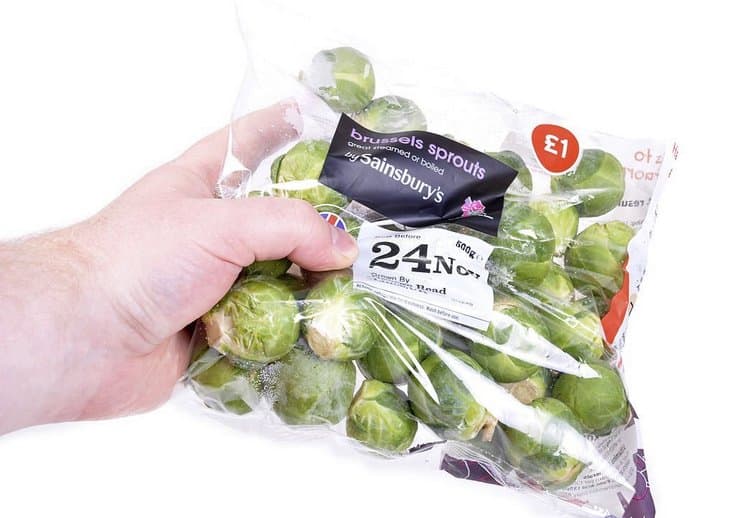
When you go to the market to buy Brussels sprouts, look for the ones that are tightly closed and have a bright green color. Avoid those that are wilted or have brown spots.
Here are a few recommendations to help you select the best sprouts available and avoid ones that have already gone bad at the store:
- When buying Brussels sprouts, look for firm vegetables with a bright green color. Avoid sprouts that are brown or yellow.
- Avoid Brussels sprouts that are wilted or have yellowed leaves; they may be older or not handled properly, and will be less flavorful.
- If possible, buy Brussels sprouts that still have their stem attached; this will help keep them fresh longer. Don’t buy sprouts whose leaves are peeling away from the center, or feel spongy.
- If the sprouts have cracks or pits, they are definitely rotten on the inside.
- Choose the smallest sprouts you can find. The sweeter brussel sprouts usually the smaller ones. The flavor of the large ones is more like cabbage.
- Check to see that the Brussels sprouts are cold on display. You must store Brussels sprouts in the fridge in a plastic bag; they should last for up to five days.
- Check out the sprouts’ smell. They’re not fresh if they smell like cabbage.
Conclusions
Some people might be hesitant to eat these non-starchy vegetables that are a different color than they are used to, but there is no need to worry – most vegetables are safe to eat, regardless of their color. However, there are a few exceptions, and one such vegetable is greenish-black.
Brownish-yellow Brussels sprouts can be safely eaten, but it is important to make sure that they are cooked properly.

